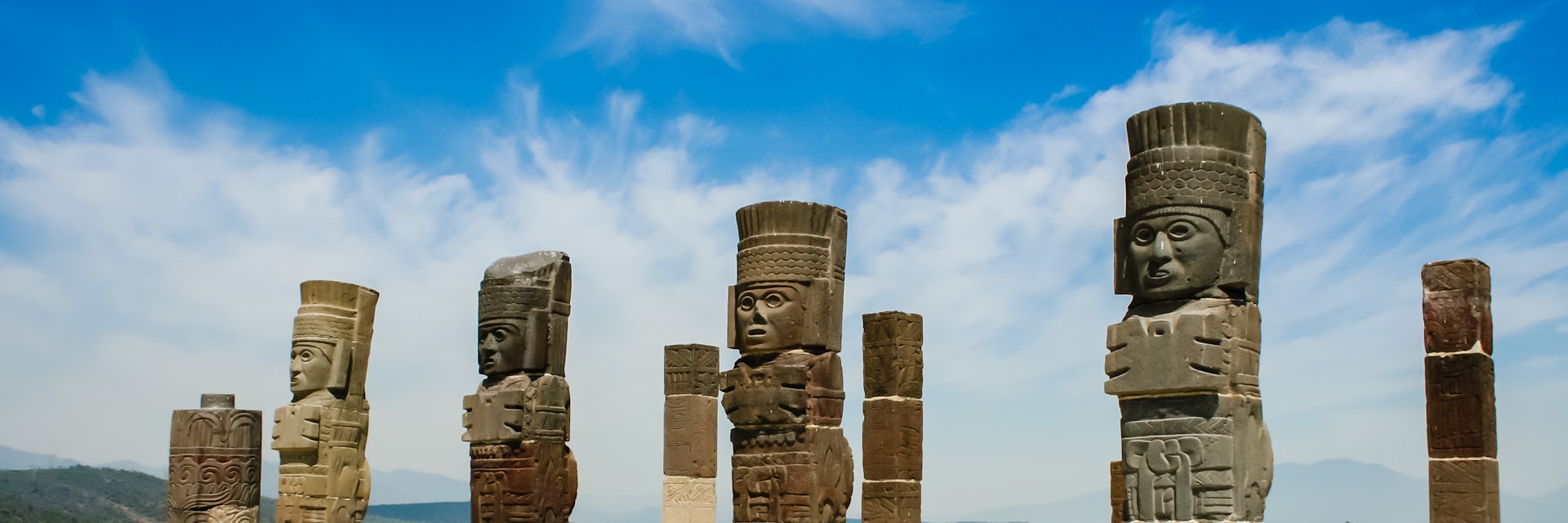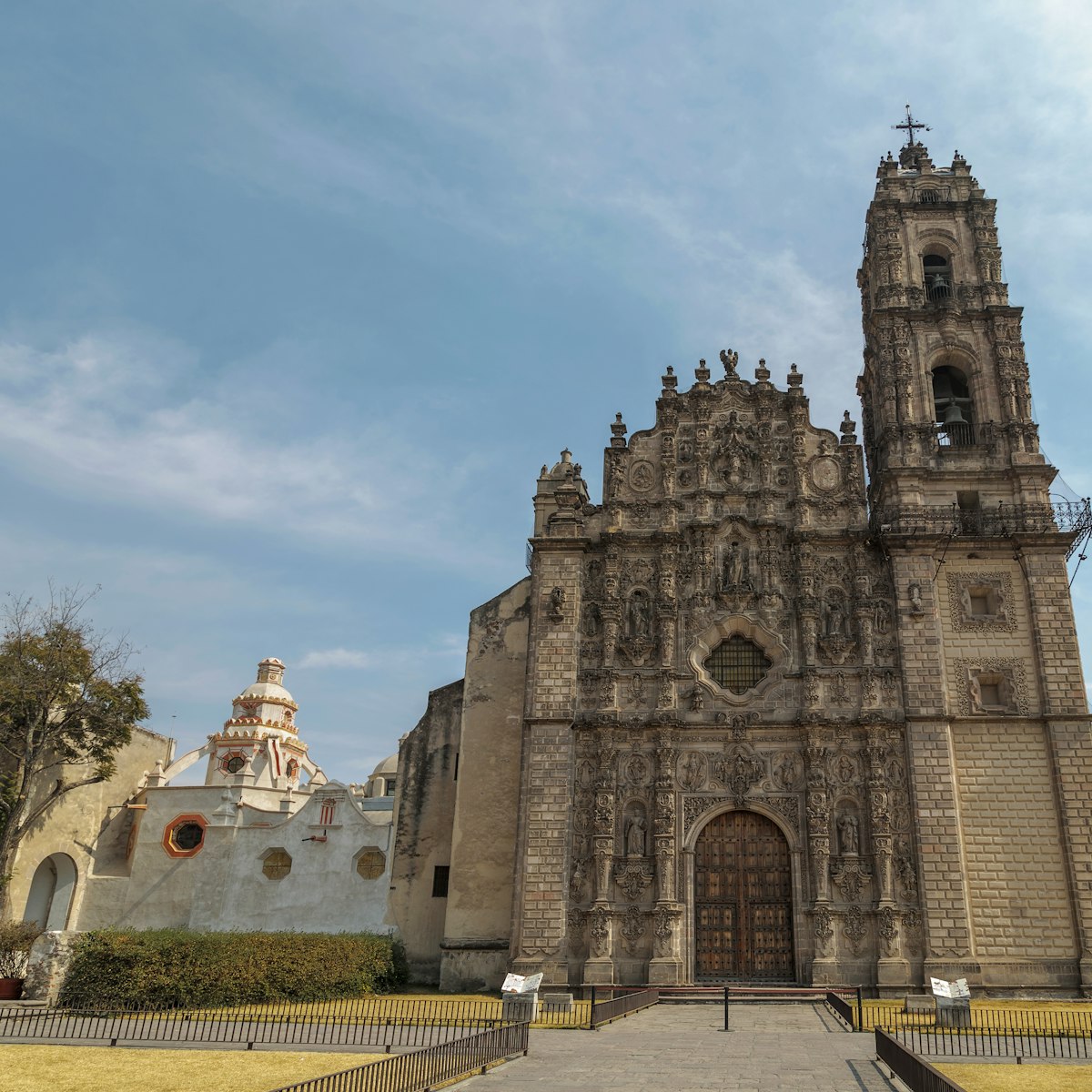Two kilometers north of Tula's center, ruins of the main ancient ceremonial site are perched on a hilltop. The highlight is standing atop a pyramid, virtually face-to-face with Toltec warrior statues, with views over rolling countryside (and the industrial sprawl nearby). Throughout the near-shadeless site, explanatory signs are in English, Spanish and Náhuatl. Near the main museum and the entrance to the site, you’ll find souvenir markets on the weekends. Both of the on-site museums are free with site admission.
The main site museum, displaying ceramics, metalwork, jewelry and large sculptures, is near the entrance, at the north side of the zona from downtown on Calle Tollan. Outside the museum is a small, well-signed (in Spanish) cacti garden.
From the museum, the first large structure you’ll reach is the Juego de Pelota No 1 (Ball Court No 1). Archaeologists believe its walls were decorated with sculpted panels that were removed under Aztec rule.
Climb to the top of Pirámide B, also known as the Temple of Quetzalcóatl or Tlahuizcalpantecuhtli (the Morning Star), to see up close the impressive remains of three columnar roof supports – which once depicted feathered serpents with their heads on the ground and their tails in the air. The four basalt warrior telamones (male figures used as supporting columns; known as 'Los Atlantes') at the top, and the four pillars behind, supported the temple’s roof. Wearing headdresses, breastplates shaped like butterflies and short skirts held in place by sun disks, the warriors hold spear throwers in their right hand and knives and incense bags in their left. The telamon on the left side is a replica of the original, now in Mexico City’s Museo Nacional de Antropología. The columns behind the telamones depict crocodile heads (which symbolize the Earth), warriors, symbols of warrior orders, weapons and Quetzalcóatl’s head.
On the pyramid’s north wall are some of the carvings that once surrounded the structure. These show the symbols of the warrior orders: jaguars, coyotes, eagles eating hearts, and what may be a human head in Quetzalcóatl’s mouth.
Now roofless, the Gran Vestíbulo (Great Vestibule) extends along the front of the pyramid, facing the plaza. The stone bench carved with warriors originally ran the length of the hall, possibly to seat priests and nobles observing ceremonies in the plaza.
Near the north side of Pirámide B is the Coatepantli (Serpent Wall), which is 40m long, 2.25m high and carved with geometric patterns and a row of snakes devouring human skeletons. Traces remain of the original bright colors with which most of Tula’s structures were painted.
Immediately west of Pirámide B, the Palacio Quemado (Burned Palace) is a series of halls and courtyards with more low benches and relief carvings, one depicting a procession of nobles. It was probably used for ceremonies or reunion meetings.
On the far side of the plaza is a path leading to the Sala de Orientación Guadalupe Mastache, a small museum named after one of the archaeologists who pioneered excavations here. It includes large items taken from the site, including the huge feet of caryatids (female figures used as supporting columns) and a visual representation of how the site might have looked in its prime.


